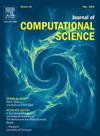Time series forecasting for multidimensional telemetry data based on Generative Adversarial Network in a Digital Twin
IF 3.7
3区 计算机科学
Q2 COMPUTER SCIENCE, INTERDISCIPLINARY APPLICATIONS
引用次数: 0
Abstract
The research related to Digital Twins has been increasing in recent years. Besides the mirroring of the physical word into the digital, there is the need of providing services related to the data collected and transferred to the virtual world. One of these services is the forecasting of physical part future behavior, that could lead to applications, like preventing harmful events or designing improvements to get better performance. One strategy used to predict any system operation is the use of time series models like Autoregressive Integrated Moving Average (ARIMA) or Long-Short Term Memory (LSTM) and improvements implemented using these algorithms. Recently, deep learning techniques based on generative models such as Generative Adversarial Networks (GANs) have been proposed to create time series, and the use of LSTM has gained more relevance in time series forecasting, but both have limitations that restrict the forecasting results. Another issue found in the literature is the challenge of handling multivariate environments/applications in time series generation. Therefore, new methods need to be studied in order to fill these gaps and, consequently, provide better resources for creating useful Digital Twins. In the proposed method we introduce the integration of a Bidirectional LSTM (BiLSTM) layer with a time series obtained by GAN that leads to improved forecasting of all feature of the available dataset in terms of accuracy. The obtained results demonstrate improved prediction performance.
基于数字孪生生成对抗网络的多维遥测数据时间序列预测
近年来,有关数字双胞胎的研究越来越多。除了将物理世界镜像到数字世界之外,还需要提供与收集和传输到虚拟世界的数据相关的服务。其中一项服务是预测物理部件的未来行为,这可能会导致应用程序,如防止有害事件或设计改进以获得更好的性能。用于预测任何系统操作的一种策略是使用时间序列模型,如自回归综合移动平均(ARIMA)或长短期记忆(LSTM),并使用这些算法实现改进。近年来,基于生成式对抗网络(generative Adversarial Networks, GANs)等生成模型的深度学习技术被用于创建时间序列,LSTM的使用在时间序列预测中得到了更多的应用,但两者都有限制预测结果的局限性。在文献中发现的另一个问题是在时间序列生成中处理多变量环境/应用程序的挑战。因此,需要研究新的方法来填补这些空白,从而为创建有用的数字孪生提供更好的资源。在提出的方法中,我们引入了双向LSTM (BiLSTM)层与GAN获得的时间序列的集成,从而提高了对可用数据集的所有特征的预测精度。所得结果表明,该方法的预测性能有所提高。
本文章由计算机程序翻译,如有差异,请以英文原文为准。
求助全文
约1分钟内获得全文
求助全文
来源期刊

Journal of Computational Science
COMPUTER SCIENCE, INTERDISCIPLINARY APPLICATIONS-COMPUTER SCIENCE, THEORY & METHODS
CiteScore
5.50
自引率
3.00%
发文量
227
审稿时长
41 days
期刊介绍:
Computational Science is a rapidly growing multi- and interdisciplinary field that uses advanced computing and data analysis to understand and solve complex problems. It has reached a level of predictive capability that now firmly complements the traditional pillars of experimentation and theory.
The recent advances in experimental techniques such as detectors, on-line sensor networks and high-resolution imaging techniques, have opened up new windows into physical and biological processes at many levels of detail. The resulting data explosion allows for detailed data driven modeling and simulation.
This new discipline in science combines computational thinking, modern computational methods, devices and collateral technologies to address problems far beyond the scope of traditional numerical methods.
Computational science typically unifies three distinct elements:
• Modeling, Algorithms and Simulations (e.g. numerical and non-numerical, discrete and continuous);
• Software developed to solve science (e.g., biological, physical, and social), engineering, medicine, and humanities problems;
• Computer and information science that develops and optimizes the advanced system hardware, software, networking, and data management components (e.g. problem solving environments).
 求助内容:
求助内容: 应助结果提醒方式:
应助结果提醒方式:


